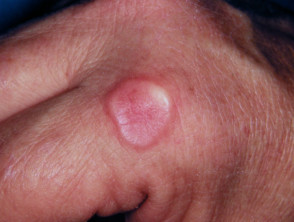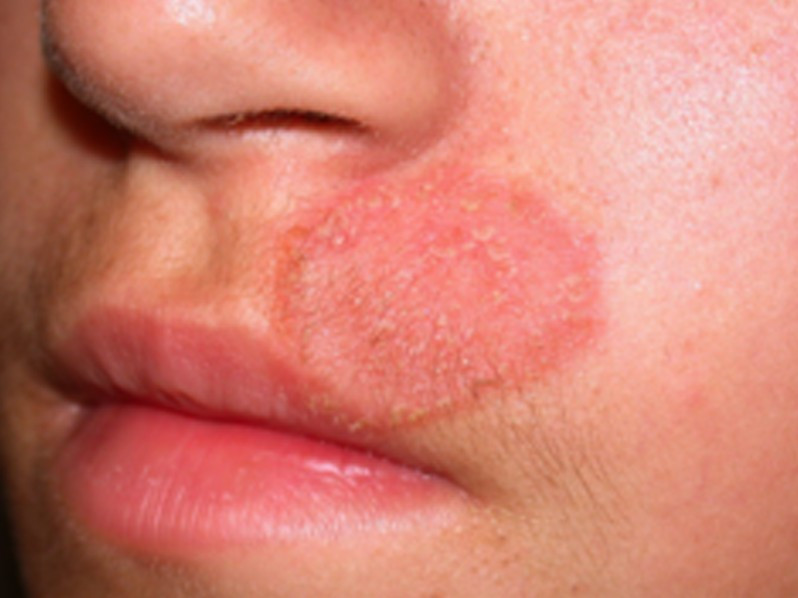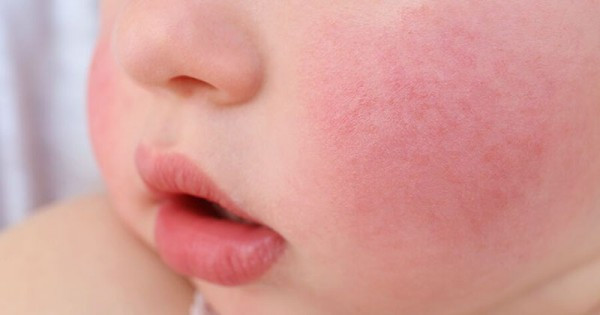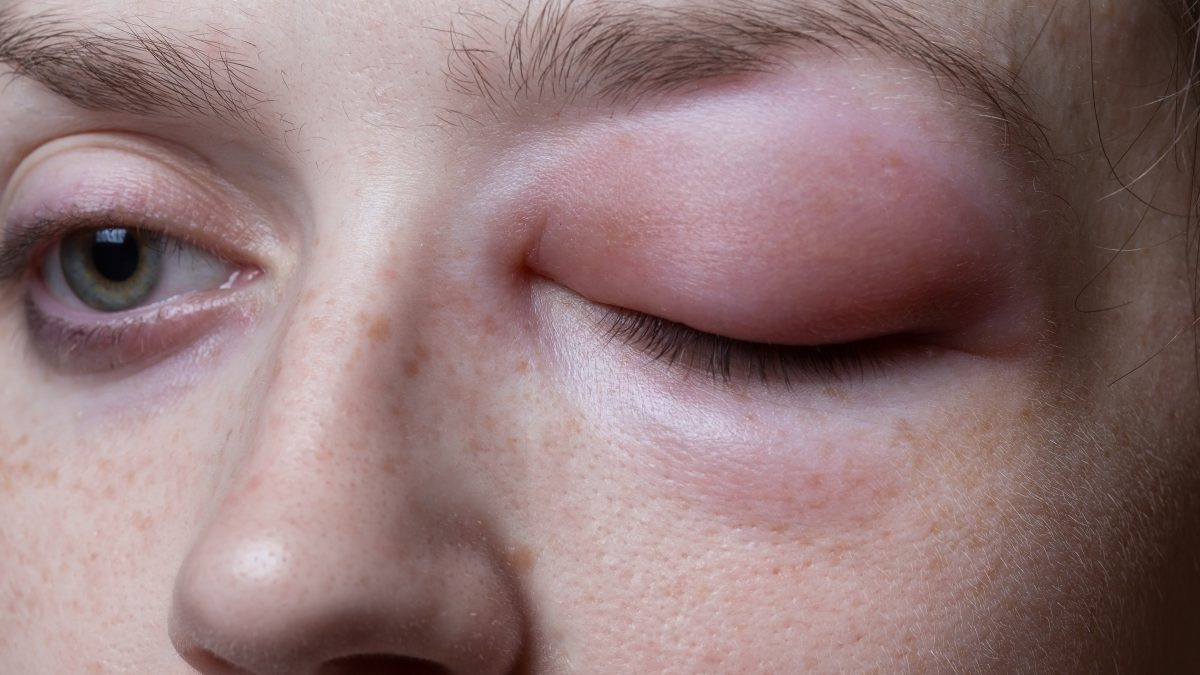Definition
Kawasaki disease is characterized by inflammation of the walls of a child's blood vessels. Kawasaki disease usually causes inflammation of the coronary arteries, which are the large blood vessels that supply oxygen-rich blood to the heart. Kawasaki disease was previously referred to as mucocutaneous lymph node syndrome because it also causes swelling of the lymph nodes and mucous membranes inside the mouth, nose, eyes, and throat.
Children with Kawasaki disease may have a high fever, swollen hands and feet, peeling skin, and red eyes and tongue. However, Kawasaki disease is usually treatable, and most children recover without serious problems if treated within 10 days of the attack.
Causes
The exact cause of Kawasaki disease is unknown. However, researchers believe it is not a contagious disease. Some researchers believe that Kawasaki disease occurs as a result of a bacterial or viral infection in the body, or that it is caused by other environmental factors. Certain genes may increase children's risk of developing Kawasaki disease.
Risk factor
3 things are known to increase a child's risk of developing Kawasaki disease, including:
- Age. Children under 5 years old have the highest risk
- Gender. Boys are slightly more at risk than girls
- Race. Children of Asian descent, such as Japanese or Korean, have a higher risk
Kawasaki disease also tends to occur seasonally. In North America, it usually occurs in winter and early spring.
Symptoms
To meet the criteria for a diagnosis of Kawasaki disease, a child usually has symptoms of fever over 39 degrees Celsius for five days or more and at least four of the following signs and symptoms:
- Rash on the body or in the genital area
- Enlarged lymph nodes in the neck
- Very red eyes without thick discharge
- Red, dry, cracked lips and a swollen, very red tongue
- Swollen, red skin on the palms of the hands and soles of the feet, with subsequent peeling of the skin in the finger and toe areas
The above symptoms may not occur simultaneously, so it is important to inform your doctor of any signs or symptoms that have disappeared previously.
Other signs and symptoms that may also occur with Kawasaki disease include:
- Abdominal pain
- Diarrhea
- Fussiness
- Joint pain
- Vomiting
Children with a high fever for five days or more who have fewer than the four signs and symptoms above may have incomplete Kawasaki disease. Children with incomplete Kawasaki disease are still at risk for coronary artery injury and should be treated within 10 days of symptom onset.
Kawasaki disease symptoms can be similar to those of multisystem inflammatory syndrome in children, as seen with COVID-19. Multisystem inflammatory syndrome is a set of inflammatory symptoms that affect many internal organs and can be life-threatening. Children with these symptoms may also be tested for COVID-19.
Diagnosis
There are no specific tests to diagnose Kawasaki disease. Diagnosis is done by ruling out other diseases that have similar signs and symptoms, such as:
- Scarlet fever, caused by Streptococcal bacteria with symptoms of fever, rash, chills and sore throat
- Juvenile rheumatoid arthritis (arthritis in children)
- Stevens-Johnson syndrome, a disorder of the mucous membranes, usually due to an allergic reaction
- Toxic shock syndrome
- Measles
- Certain tick-borne diseases, such as Rocky Mountain spotted fever
The doctor will perform a physical and supporting examination to help make a diagnosis. Supportive examinations that may be performed include:
- Blood tests. Blood tests help rule out other diseases and check blood cell counts. A high white blood cell count, low hemoglobin or anemia, and signs of inflammation are signs of Kawasaki's disease
- Electrocardiogram (ECG). In this examination, electrodes are placed on the skin of the chest, wrists, and feet to assess the heart's electrical activity. Kawasaki disease can cause heart rhythm problems, so it is important to have an ECG done
- Echocardiogram or ultrasound of the heart. This test is to determine the function of the heart and assess for coronary artery problems
Management
Treatment should begin as soon as possible to reduce the risk of long-term complications, ideally while the child is still experiencing early symptoms like fever. Early treatment aims to reduce fever and inflammation while preventing heart damage.
Treatment options for Kawasaki disease include:
- Gamma globulin therapy. Gamma globulin or immune protein infusion can lower the risk of coronary artery problems by helping reduce inflammation in the blood vessels.
- Aspirin therapy. High doses of aspirin medication can help treat inflammation and reduce pain, arthritis, and fever. The aspirin dose is lowered after the fever has gone for 48 hours.
Apart from the treatment of Kawasaki disease, children should not be given aspirin. Kawasaki treatment is an exception to the rule. Aspirin has been linked to Reye's syndrome in children recovering from chicken pox or the flu. Reye's syndrome is a rare but potentially life-threatening condition. Aspirin administration in children with Kawasaki disease should be supervised by a doctor
Due to the risk of serious complications, initial treatment for Kawasaki disease is usually given in the hospital so that doctors can continue to monitor the child's condition.
After initial treatment
If the child has a coronary artery aneurysm, he or she will typically need to take low-dose aspirin for at least six weeks or longer after the fever has subsided. An aneurysm is a protrusion of the blood vessel wall in an area of weak wall that is prone to rupture and bleeding. Aneurysms increase the risk of blood clots, which can cause heart attacks. In these cases, aspirin can help prevent blood clots.
However, during treatment, children who develop the flu or chickenpox may need to discontinue aspirin because it is linked to Reye's syndrome. This potentially fatal condition affects the blood, liver, and brain of children and adolescents following a viral infection.
The child's condition may improve soon after receiving the first gamma globulin therapy. Without treatment, Kawasaki disease lasts approximately 12 days. However, cardiac complications may last longer.
Monitoring heart problems
Suppose the child exhibits signs of heart problems. In that case, the doctor will recommend follow-up tests to monitor the child's heart health at regular intervals, typically 6-8 weeks after the initial symptoms and again at 6 months.
If the heart problems continue, the child will be referred to a pediatric cardiologist. The treatment of heart complications caused by Kawasaki disease is determined by the type of heart problem.
Adjusting the vaccination schedule
If the child is given gamma globulin, it is best to wait at least 11 months before administering a live vaccine, such as chickenpox or measles, because gamma globulin can interfere with the action of these vaccines. Inform the doctor or vaccination officer that your child has Kawasaki disease.
Learn about Kawasaki disease to understand and choose the best treatment for your child. Most children with Kawasaki disease make a full recovery. Children who have been treated usually recover quickly and can resume their normal activities. If the child's heart is impaired, discuss with the cardiologist whether activity restrictions are necessary.
Complications
Kawasaki disease is the leading cause of acquired heart disease in children in developed countries. However, with treatment, only a few children will develop permanent heart damage. These heart complications include:
- Inflammation of blood vessels, typically in the coronary arteries that supply blood to the heart
- Inflammation of the heart muscle
- Heart valve disorders
Each of these complications can damage the heart. Inflammation of the coronary arteries can result in arterial aneurysms. Aneurysms increase the risk of blood clots, which can cause a heart attack or fatal internal bleeding. In a small percentage of children who develop coronary artery problems, Kawasaki disease can lead to death.
Prevention
Kawasaki Disease is a condition whose causes and risk factors are usually irreversible and unavoidable. Therefore, there is no definitive way to prevent it. However, prompt diagnosis and treatment can help children with this condition to fully recover within 6-8 weeks. It is important to note that complications can be prevented through early diagnosis and treatment.
When to see a doctor?
If your child has a fever lasting more than three days, it is recommended to consult a pediatrician. Timely treatment of Kawasaki disease within the first ten days following onset can significantly reduce the risk of permanent damage to the coronary arteries and heart.
Looking for more information about other diseases? Click here!
- dr Nadia Opmalina
Kawasaki disease. (2021). Retrieved 11 April 2022, from https://www.mayoclinic.org/diseases-conditions/kawasaki-disease/symptoms-causes/syc-20354598
Sosa TK. (2018). Kawasaki disease. Retrieved 11 April 2022, from https://emedicine.medscape.com/article/965367-overview
Kawasaki disease. (2020). Retrieved 11 April 2022, from https://www.webmd.com/children/what-is-kawasaki-disease
Kawasaki disease. (2021). Retrieved 11 April 2022, from https://www.nhs.uk/conditions/kawasaki-disease/
Higuera V. (2017). Kawasaki disease: what you need to know. Retrieved 11 April 2022, from https://www.medicalnewstoday.com/articles/164533
Kawasaki disease. (2020). Retrieved 11 April 2022, from https://www.cdc.gov/kawasaki/index.html
Notes: referensi 1 sumber utama gejala & Dx












